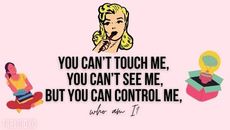Advertisement:
Also Read: Gifts you can give to your boyfriend this christmas!!
Also Read: 20+ Blouse Back Design | Latest Blouse Designs Images.
Also Read: 10 Best Ideas To Impress Guest At Wedding.
Also Read: 8 Things We Can Copy From Indian Celebrity Weddings.
Advertisement:
1 in 59 children is diagnosed with an autism spectrum disorder (ASD). Autism is a complex developmental disability that affects a child's ability to communicate, play, learn, and relate to others. There are indications that instances of ASD are on the rise. Some attribute this increase to environmental factors. However, experts debate whether there's an actual increase in cases or just more frequent diagnoses. While the symptoms and severity of this spectrum disorder can vary widely between individuals, increased awareness helps parents seek professional guidance early in a child's life-so that diagnosis and intervention can help children achieve their full potential.
1. Each case is unique:
Each case of Autism is different. You can't generalize and make common assumptions about an autistic child because you may have seen some other child's experience. Therefore, it is important to understand that each case is unique because of the huge spectrum of variances within the disorder.

2. Knowing Autism.
The parents have to have a look out for the red flags of the symptoms. The earlier they know and consult a professional, the better. But understand that there is no specific time when children begin showing their signs. It is gradual and later for some too. We can often diagnose autism reliably by 2 years of age, but the signs can be subtle and require expertise with this age group to recognize. So, despite our ability to diagnose the condition early, many children continue to be diagnosed much later, at 4 to 5 years of age.

3. Social skills.
Children with autism may seem socially distant, but they do love their families and desire to have friendships ,but need help developing social and communication skills. School programs and therapists with special training can often support to children in developing these skills. Teach them to use simple language and short sentences. Give no more than two-step instructions.

4. Struggles with language.
Children on the autism spectrum who can speak and display high IQs still face "invisible" challenges. They often struggle with abstract language-like understanding humor and figurative languages such as metaphors and puns. They often misconstrue people's comments because they struggle to "read between the lines" and understand what people meant by what they said. These children are at especially high risk for bullying and other forms of social exclusion, as they may not know when they are being teased.

5. Therapeutic solutions.
At present, the evidence-based treatments for autism are educational/therapy related and not medical. These treatments are most effective when begun early; they're intensive in nature and based upon behavioral principles. Parents play a critical role in nurturing social interest in the beginning stage.

6. Sensitive senses.
They may be over or under sensitive to sounds, sights, tastes and touch which may affect their willingness to wear certain clothes, eat certain foods, or tolerate certain sounds (such as vacuum cleaners, loudspeakers, or even the sound made by fluorescent lights). Children with autism may "hear" or experience discomfort from sounds or visual frequencies that their neurotypical peers don't even notice.

7. Other disorders.
There are other conditions that go along with autism. These include early loss of social and language skills, toe walking, intellectual disability, ADHD, sleep problems, gastrointestinal problems and wandering. Many people with autism experience anxiety.

The main thing to know about autism is that these children are still children. They need a loving and tender environment to grow and we should do our best to provide it so. Also, to all the young parents out there who have a little one who might be struggling with this disorder, please know that it is not your fault or your child's fault. Be there for each other and that is what family is for. You are doing great.
Trending Now.
...Play Quiz. →
Trending Memes. →
Latest Stories.
©To Clap2Ram Media (TabloidXO™)
Trending Now
Advertisement:



































